In the 1850s, St. Louis was a rapidly growing city located in the state of Missouri in the midwestern United States. At the time, it was a major hub for transportation and commerce, with a population of around 77,000 people, with many immigrants from Europe, including Germany, Ireland, and Italy. There was also a significant African American community in the city, made up of both free blacks and enslaved people. It was located along the Mississippi River and was a key stop on the Oregon and Santa Fe trails, which were used by settlers and traders traveling westward.
St. Louis was an important center of industry in the 1850s, with a range of manufacturing companies operating in the city. These included breweries, ironworks, and cotton mills, as well as several other businesses. The city was known for its production of iron and steel, which were used in the construction of buildings, bridges, and other infrastructure projects.
Despite its prosperity, St. Louis was also a divided city in the 1850s, with deep social and economic divides between different groups. Slavery was legal in Missouri, and the city was home to a number of slave traders and slave owners. There was also significant racial tension, as African Americans were often subject to discrimination and segregation.
Overall, St. Louis in the 1850s was a vibrant and rapidly growing city that was central to the economic and cultural life of the United States. It was also a center of political activity, with many residents actively involved in the abolitionist and pro-slavery movements of the time.
#1 Breaking of the Ice, 1856
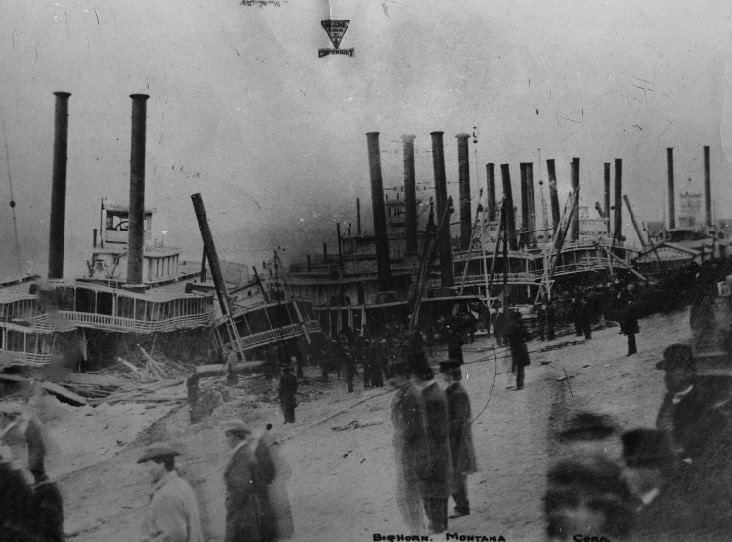
Fire was not the only cause of disaster along the riverfront, for spring thaws took their toll, too. This scene shows some of the damage which resulted from ice breaking up in '56. Note throng attracted to levee. Spring thaws that took their toll along St. Louis riverfront in the days of heavy steamboat...shows some of the damage which resulted from ice breaking up in 1856. Note crowd attracted to levee... Ice was a deadly menace to the wooden-hulled steamboats, locking them to the shore and then crumpling them into splintered wrecks when it thawed and began to break.
#2 Riverfront Old Pix St. Louis Levee, 1858
#3 Olive Street in St. Louis, 1859. A large high school can be seen in the background. The building was built in 1855 in the Lucas Place neighborhood.
#4 Large two-page spread of the Steamer Sultana that originally appeared in Ballou’s Pictorial Drawing Room Companion, 1856
#5 Flood at St. Louis, June 18, 1858
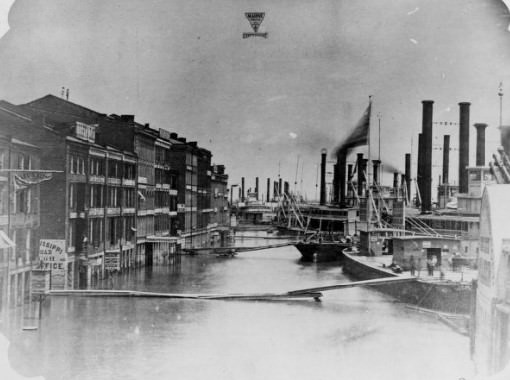
The streets were completely covered in water and make-shift planks provided a safe walking platform for people to safely cross from boats to the semi-submerged buildings. Two people can be seen assessing the flood damage from the rooftop of the tallest building on the left of the photograph, while others on the right stand safely on the deck of a steamboat.


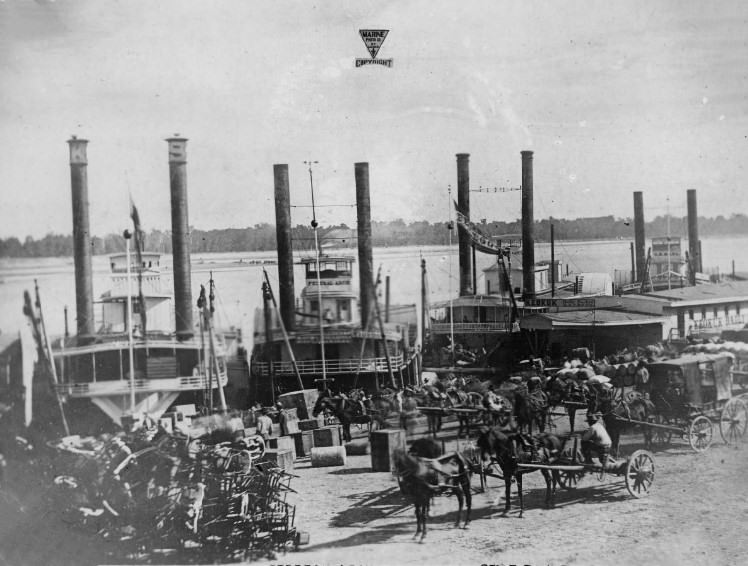
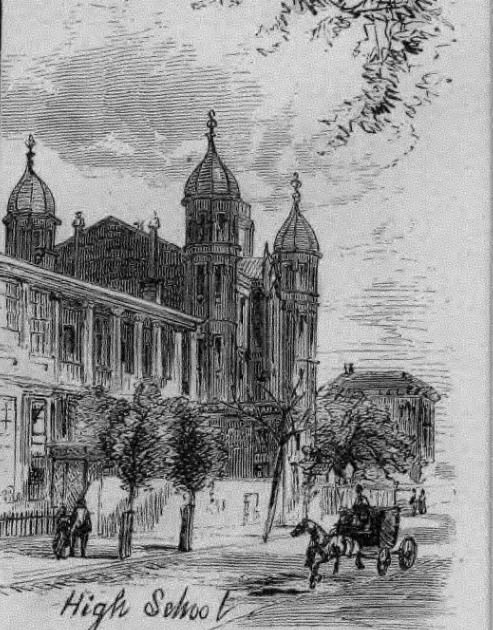
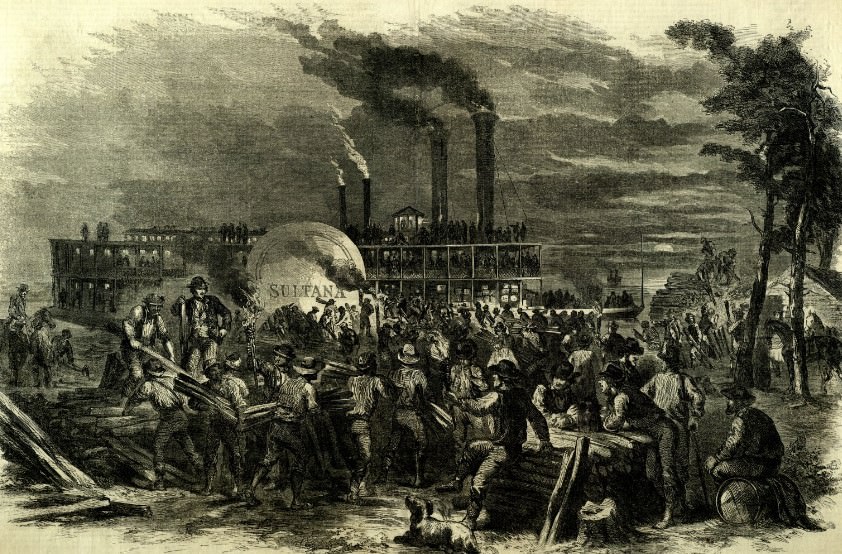
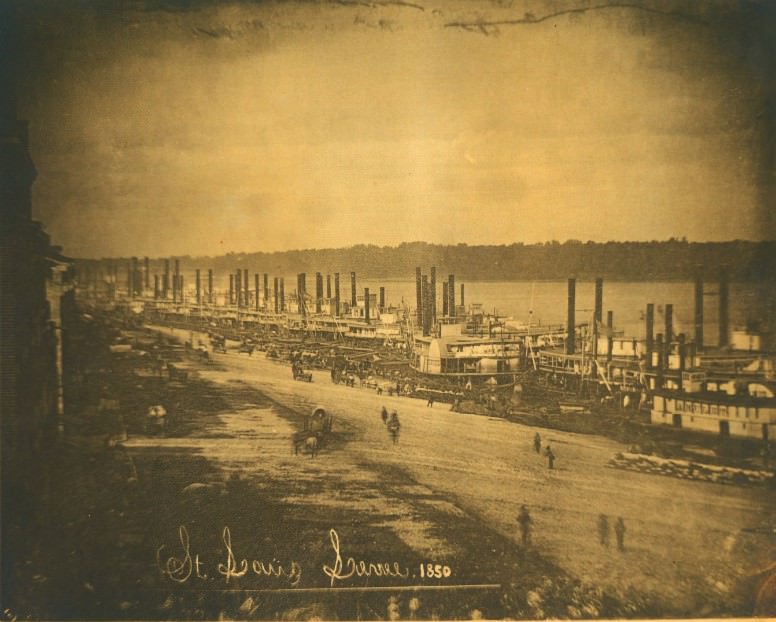
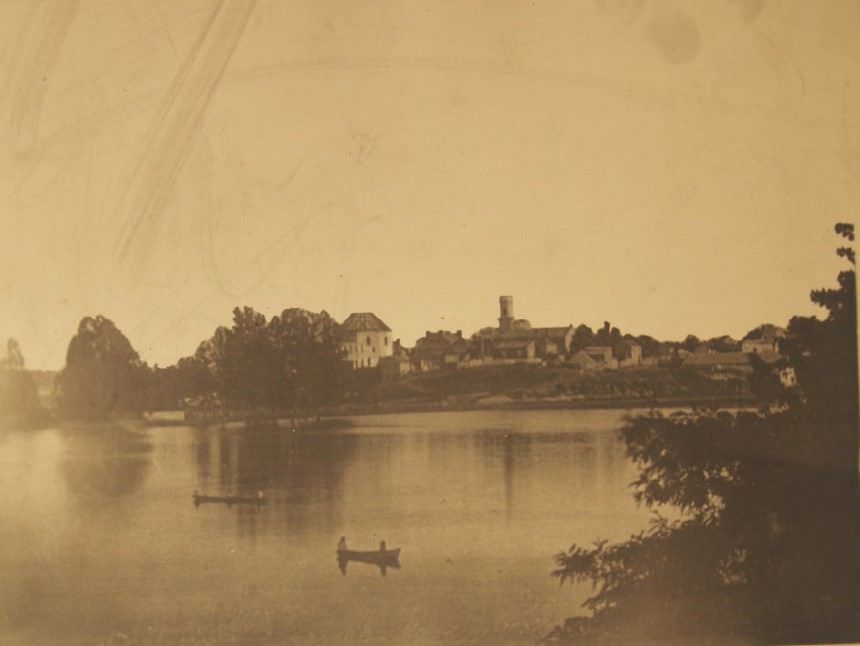
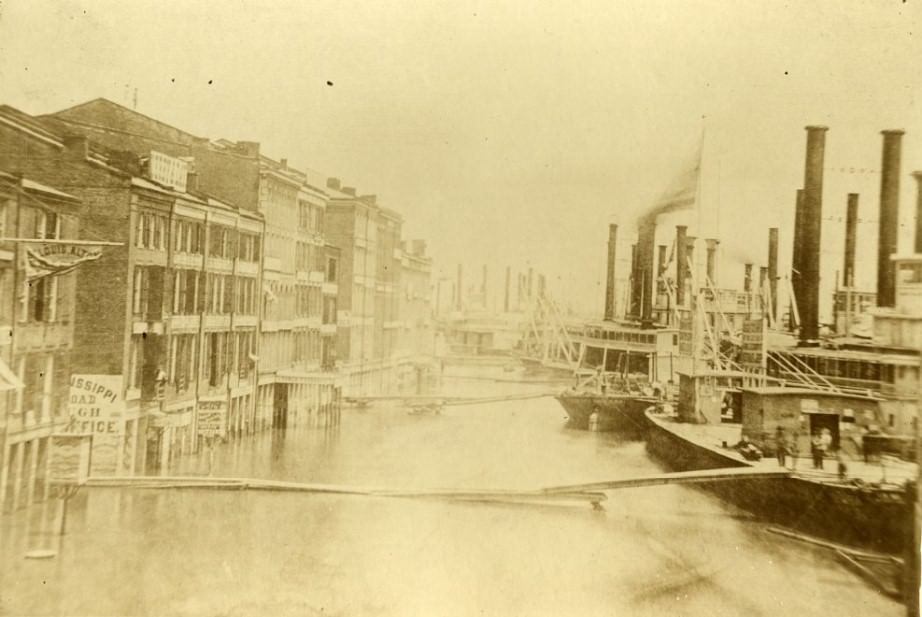
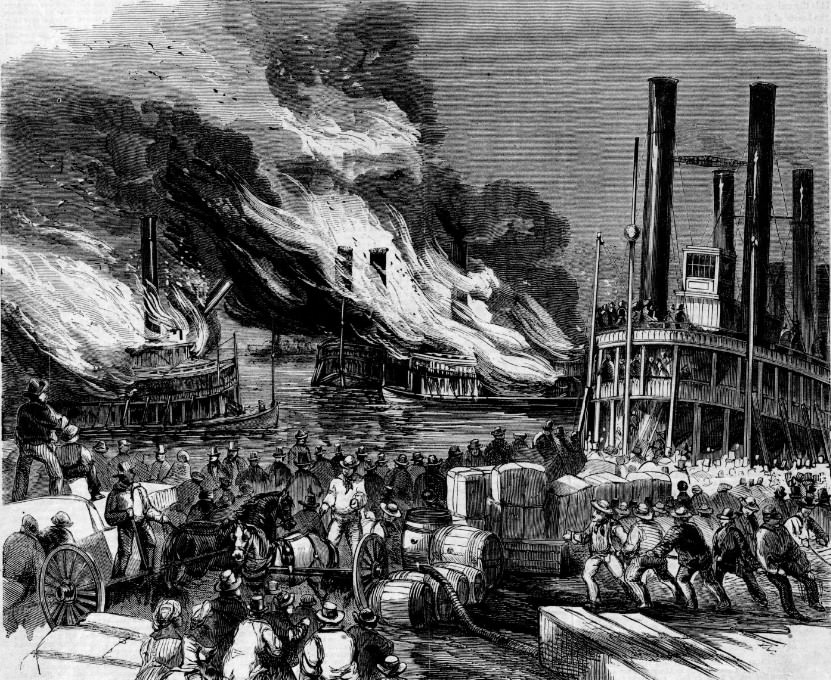
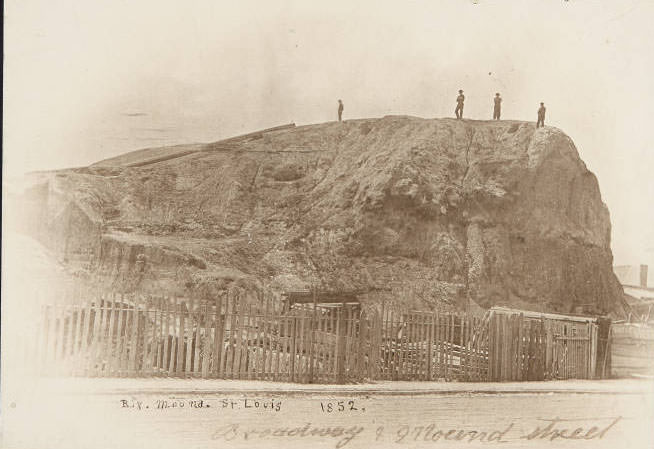

Ummm…there were no automobiles lining the streets in 1857!